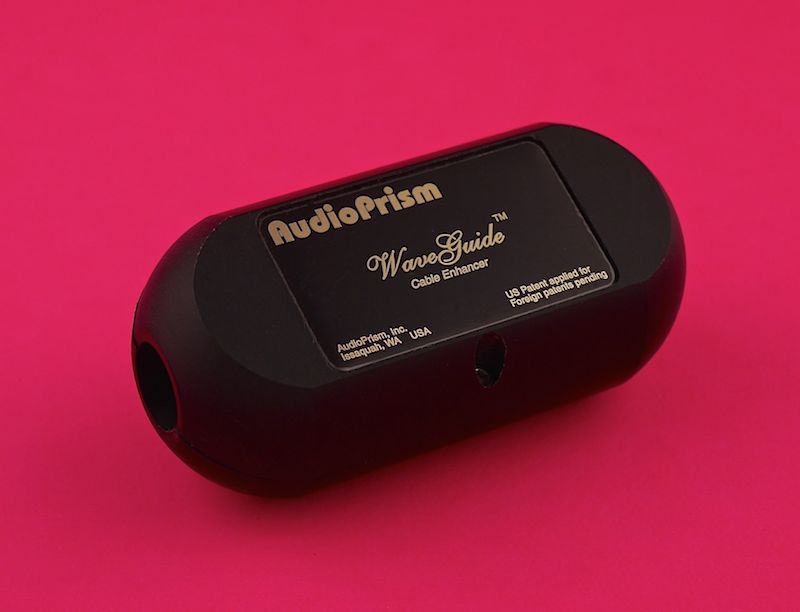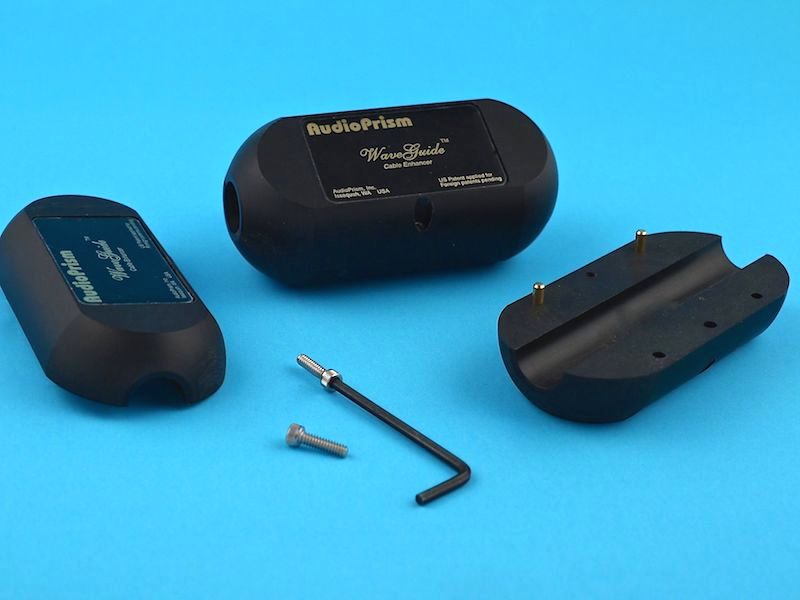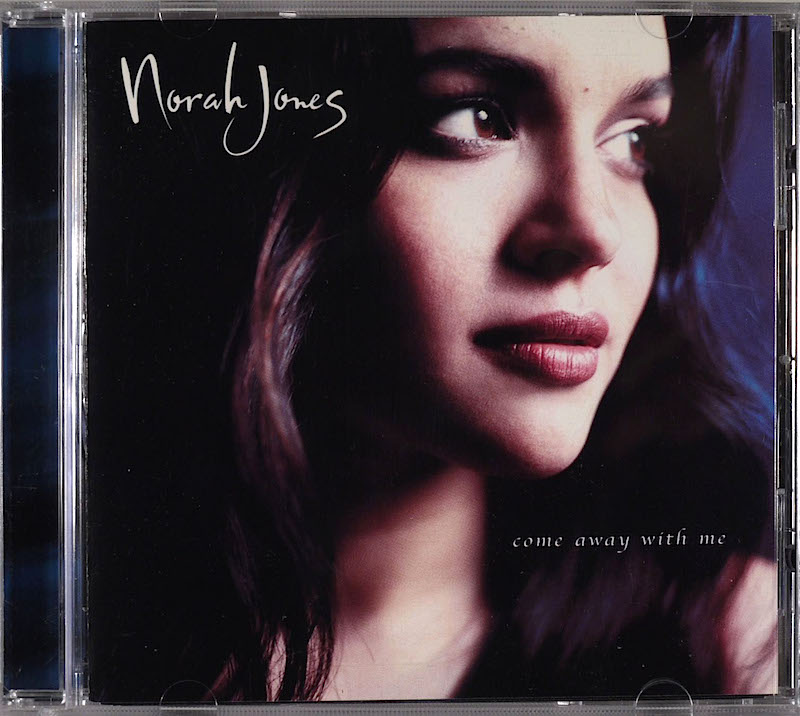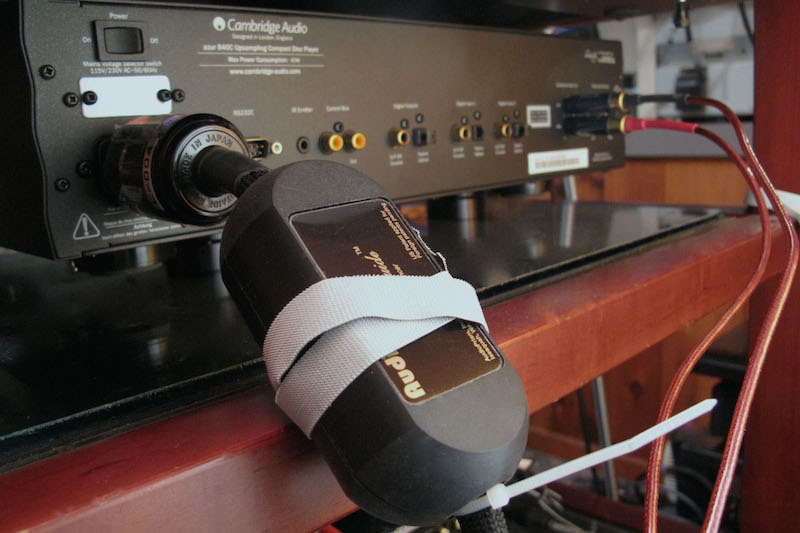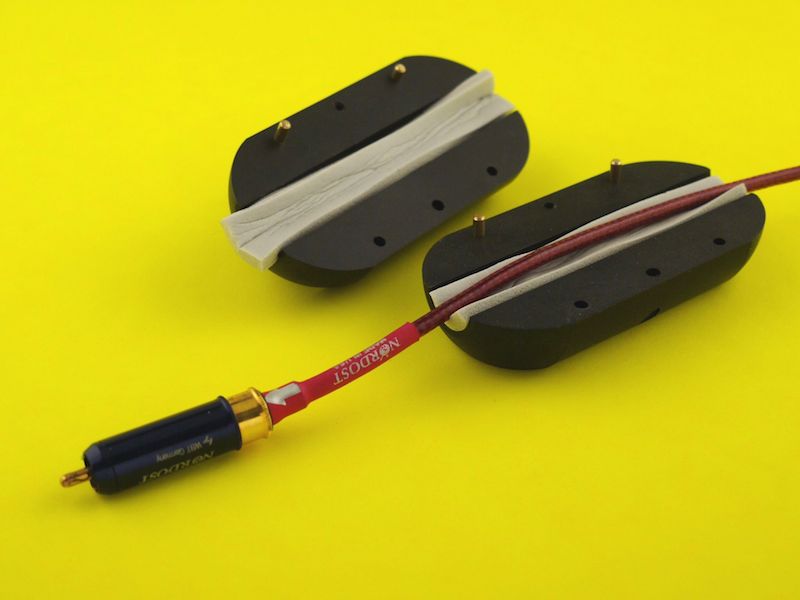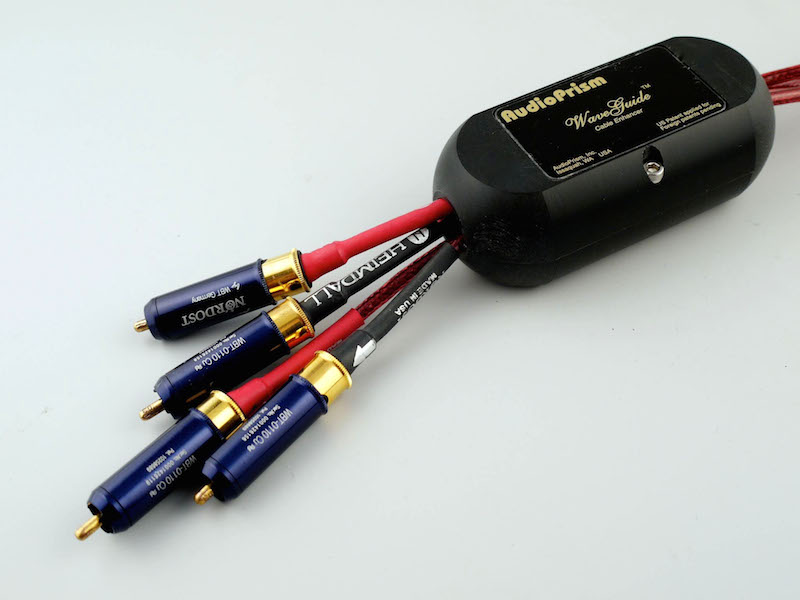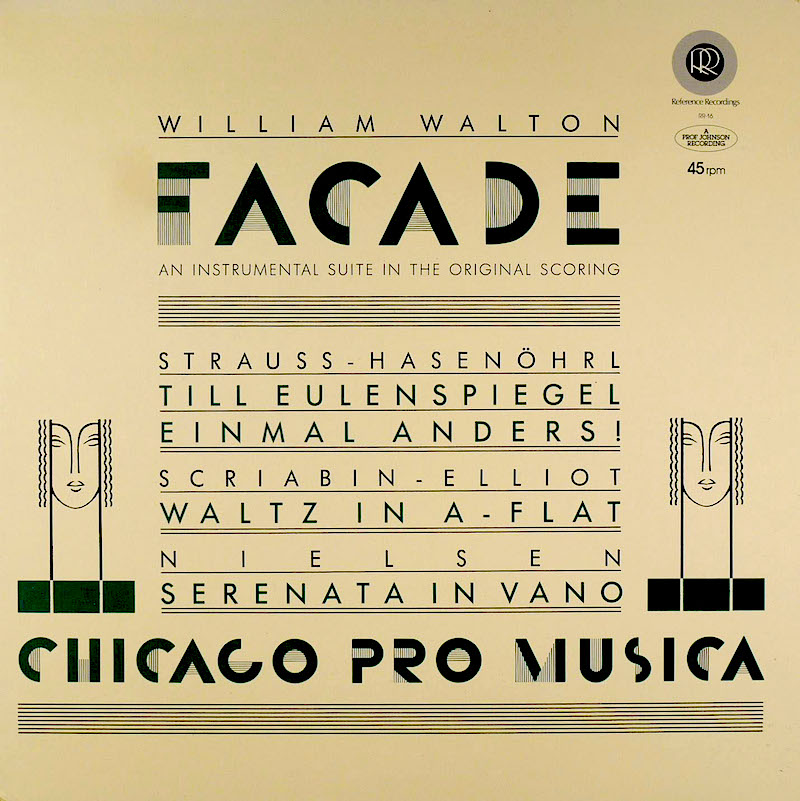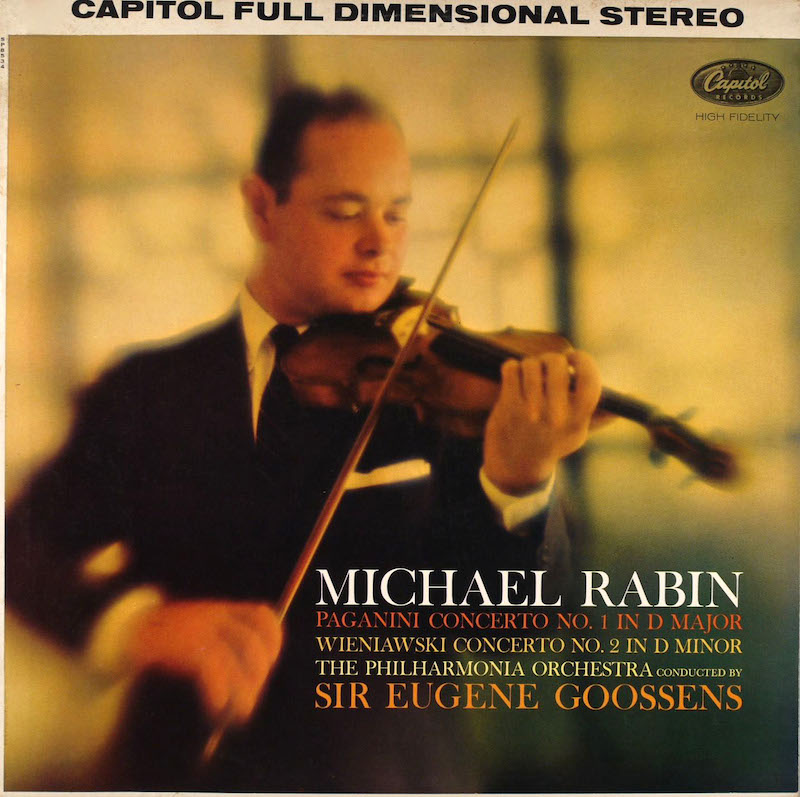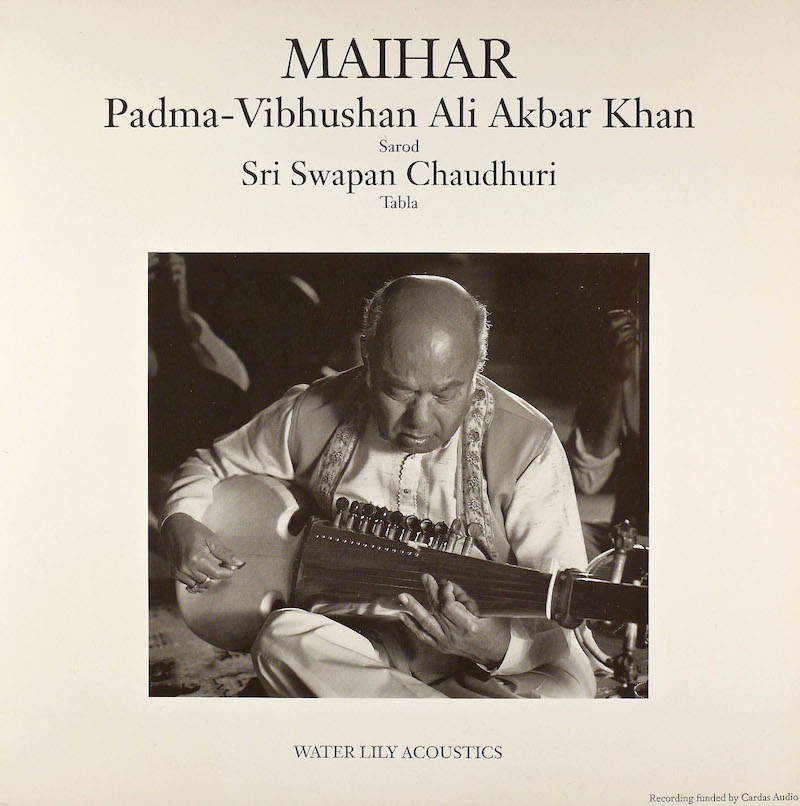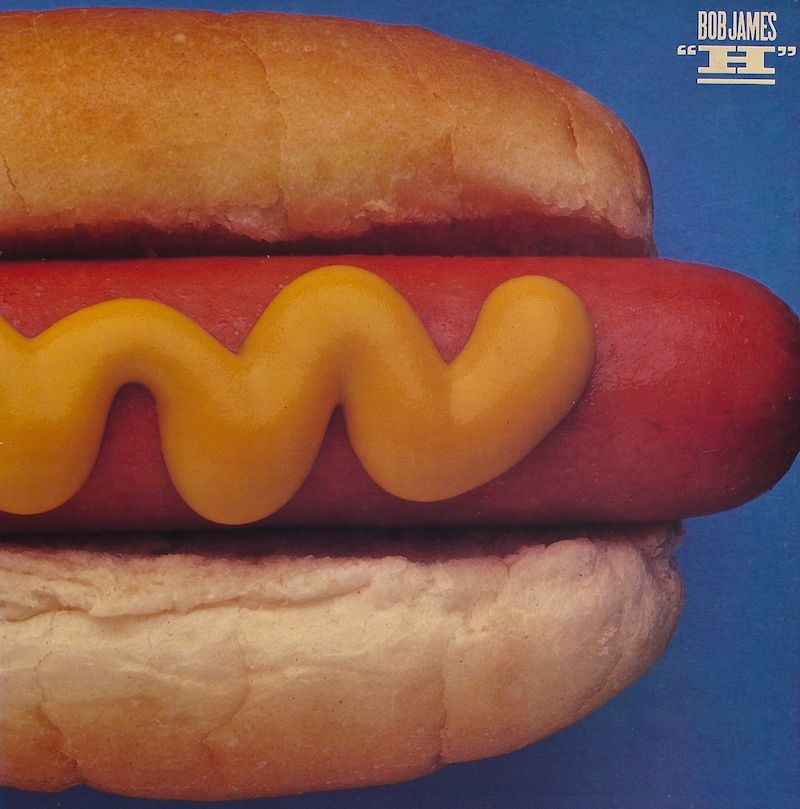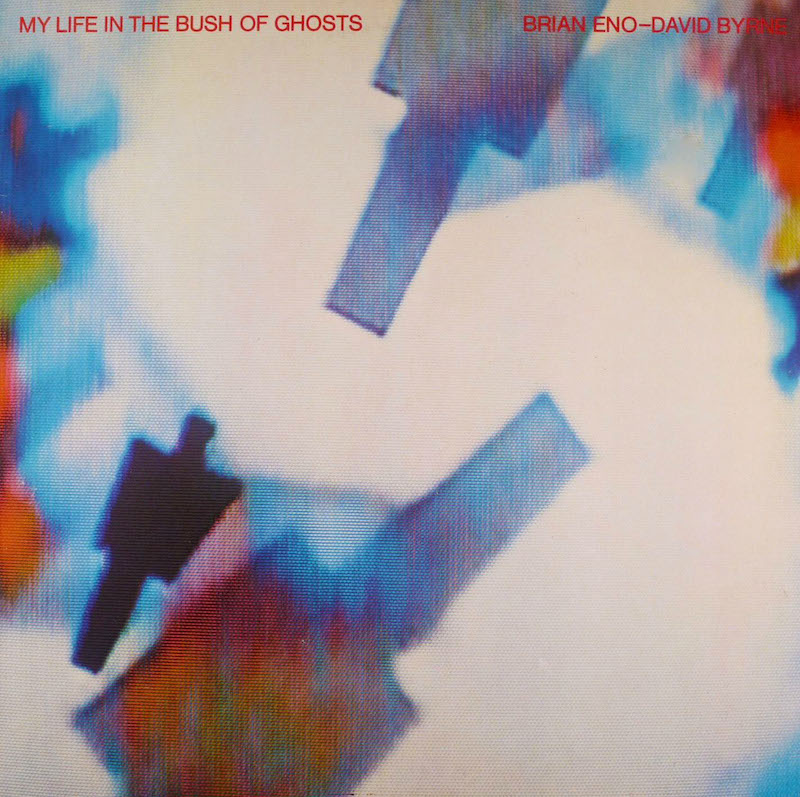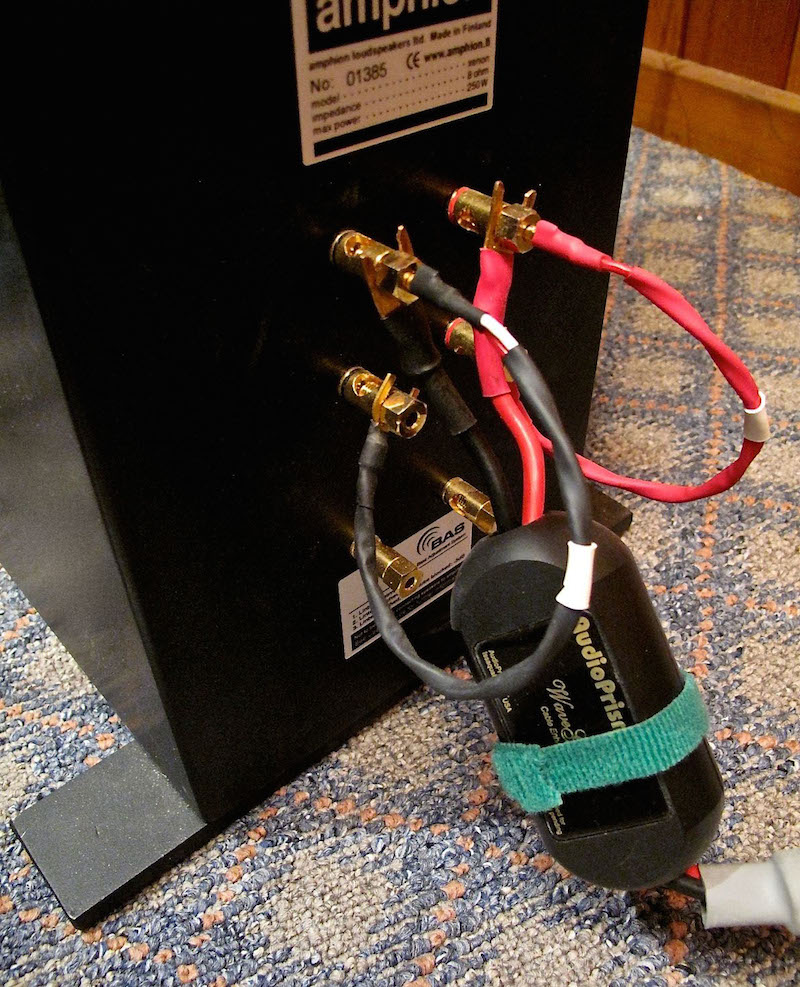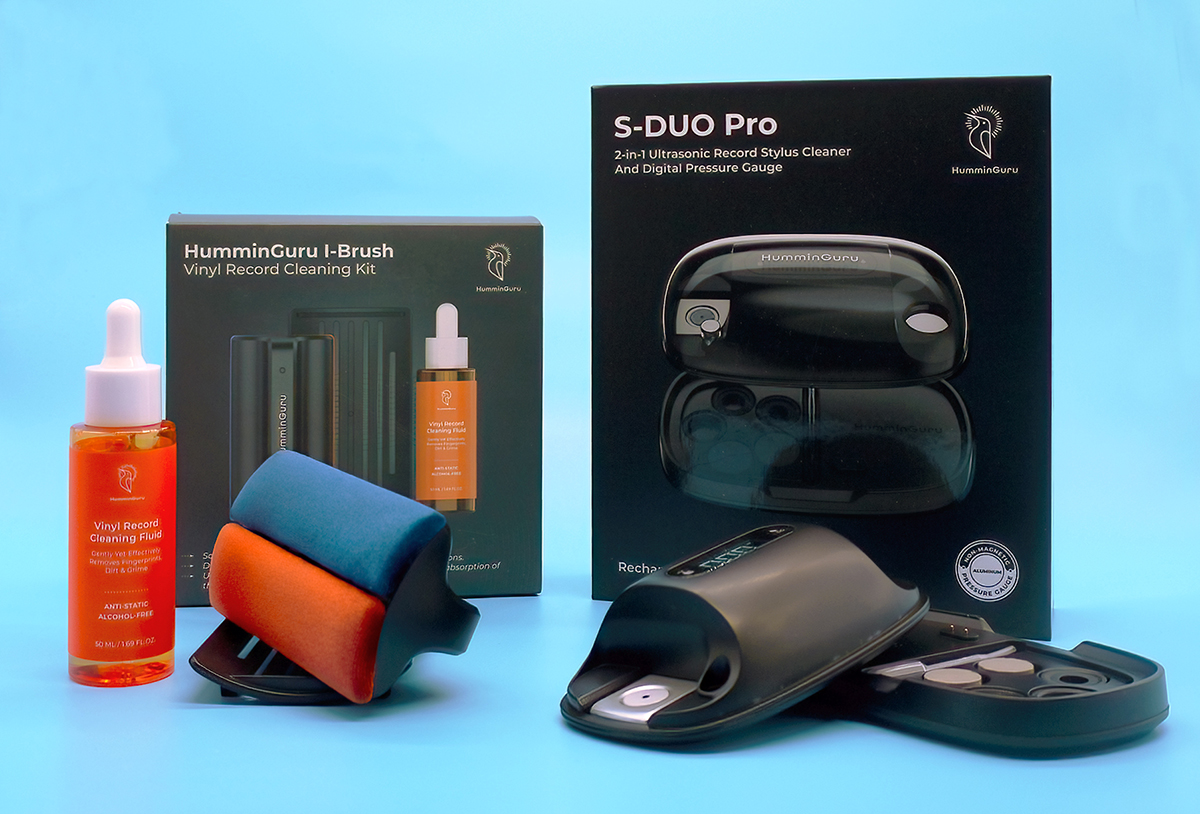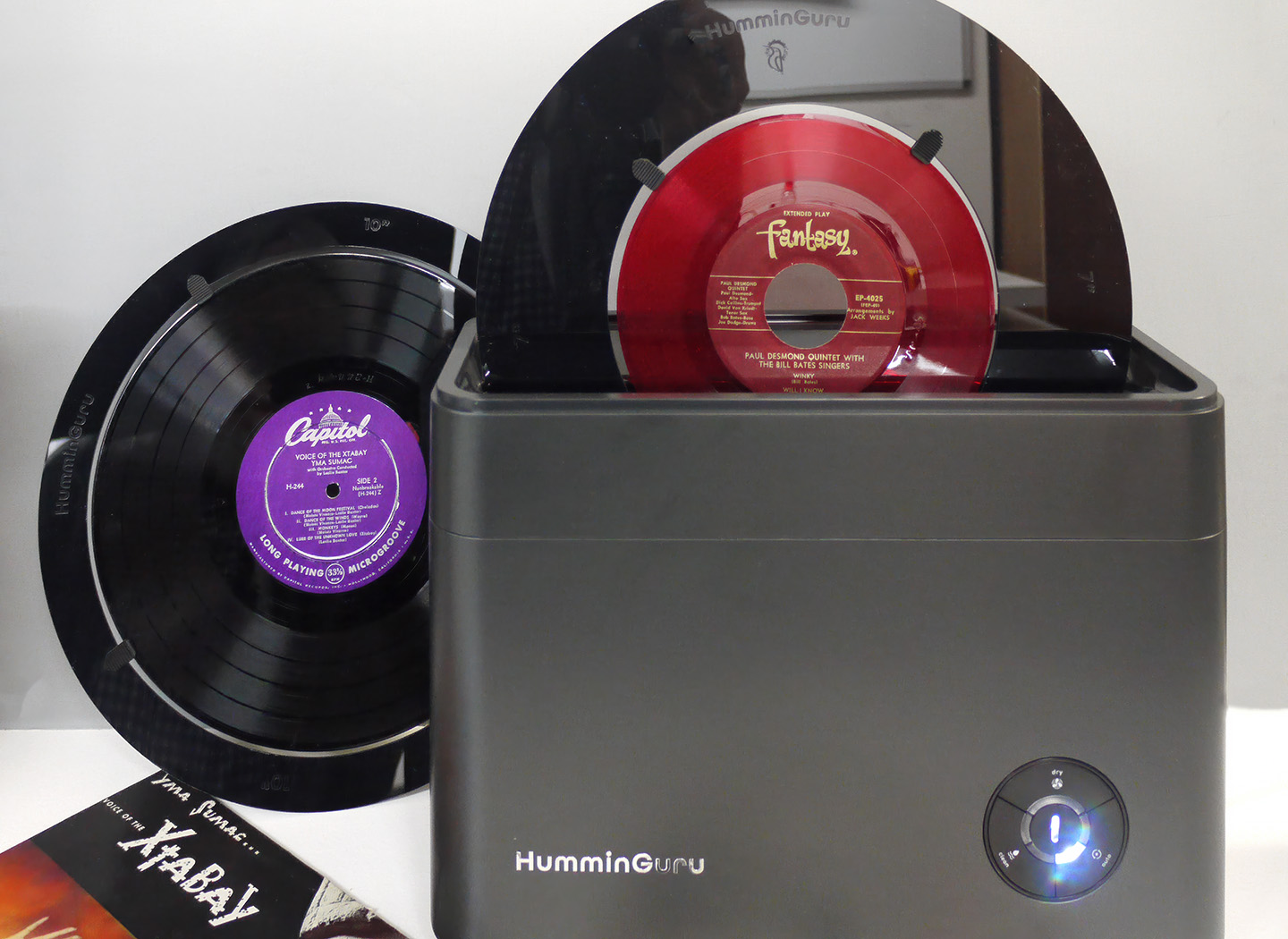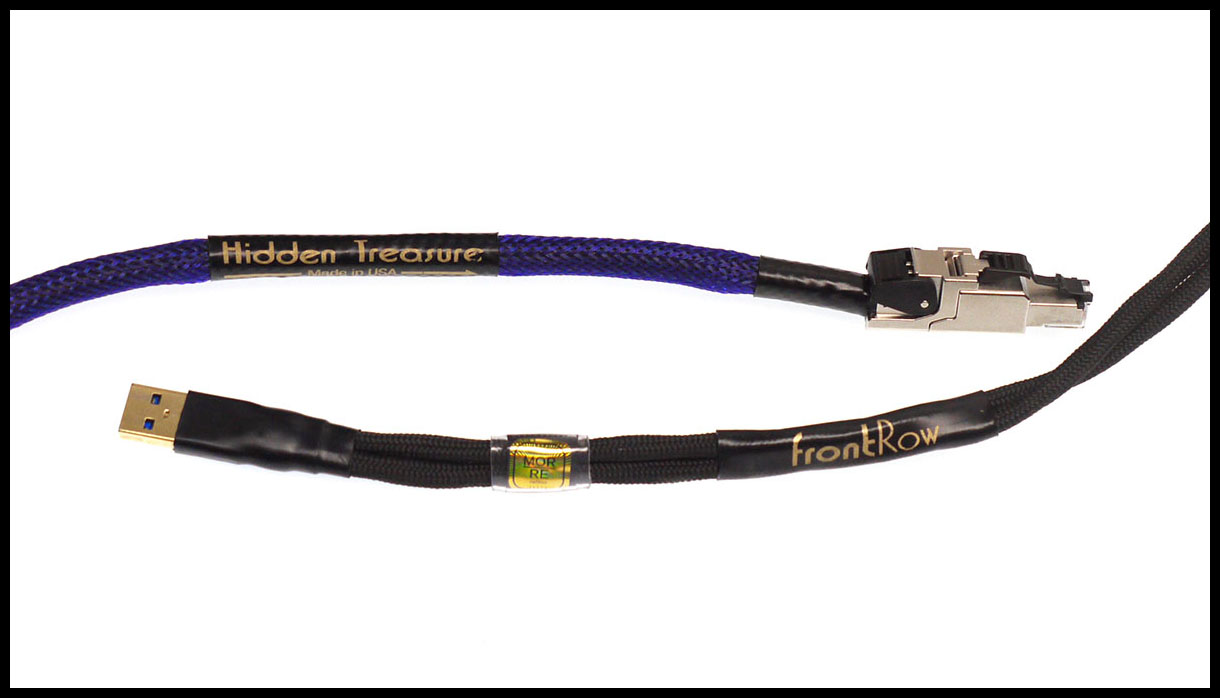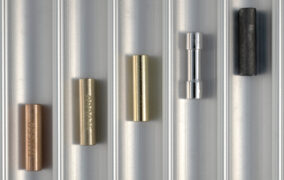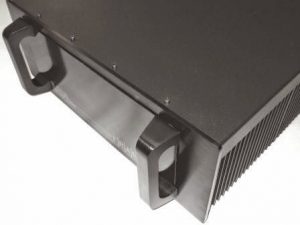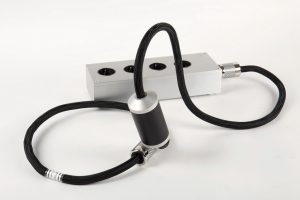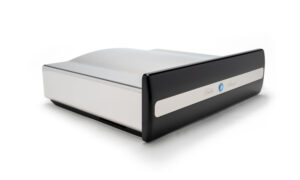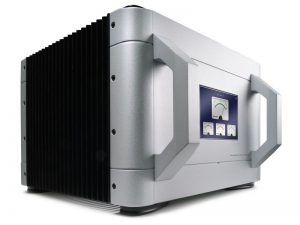There's every probability you already have an opinion about audiophile tweaks and the folks who review them. Sometimes it seems like half the double-blindsters on the internet remain fixated on the original AudioPrism StopLight CD marker pen, so discussing any device from that company entails a certain incendiary risk-especially as Positive Feedback now features a reader comments section. But given you're here and still reading, I'll put it out there:
I'm thinkin' the AudioPrism WaveGuide may be the coolest thing since sliced bread.
Actually, by form factor, it looks much more like a truncated hotdog bun made of black Delrin than a loaf of Wonderbread, so that's what I'll call it herein–a bun. About 4" long, 2" wide, 1 5/16" high, weighing in at 12 oz., it consists of two identical sections, held together by a pair of small hex-head bolts, one from each side-with internal brass alignment pins. Open it (an allen wrench is included) and you'll find the top and bottom pop apart due to opposing internal magnets. A groove is milled in each section creating a 5/8" diameter channel when assembled. Thus the bun can be easily fitted around any audio, video, power, or digital cables that fit inside. (Actual hotdogs are a bit too big). That's it: no batteries, grounding schemes, dongles, networks, smoke, mirrors, voodoo or quasi-quantum physics. It is in fact entirely passive, and not in the circuit at all. Plus, it has essentially zero Bling appeal (or maybe less). What's the rationale? It works and the results from multiple units are cumulative. If you are deep into Tweakers Anonymous, kindly avert your ears.
If you'll forgive the paraphrase, there is the noise you can hear, the noise you can't hear, and the noise you can't hear that you can't hear. Respectively, audible noise (hum, ground loops, tube rush, DC offset, hiss, and static); differential noise (typically Radio Frequency Interference and Electro-Magnetic Interference); and common mode noise (more RFI and EMI, but sneaky). To over-simplify, audible noise can have many different causes, but you can usually figure out the culprit: grounding schemes, intermittent contacts, cable locations, power supply, etc. However, wire in general is all too happy to act as an antenna, picking up the radiated garbage the modern world generates: cell phones, radio transmissions, wi-fi, refrigerators cycling, fluorescent lights, dimmers, computers, even interaction with other audio components. When both conductors in an audio circuit pick up different amounts of grunge, that differential can sometimes be audible when amplified. Although most RFI is high frequency noise well above the audible spectrum, one can sometimes actually pick up broadcast radio-usually Rush Limbaugh in my unhappy experience. One reason the cable companies brag on their "unique geometry" is that even twisted pair or braided (ala Kimber) designs inherently reject RFI, and coaxial or shielded or balanced cables drain the RFI to ground. So with modern cables you generally can't hear RFI per se, although you can often tell when RFI is reduced-that's part of the reasons cables sound different. Blacker blacks and all that in reviewerspeak.
Common mode noise doesn't get as much press. It is unwanted noise (RFI, switching power supplies, etc) that is equally present (along with the signal) on both legs of a circuit, i.e., common to both, and thus geometry and shielding may be of little help. It may be inaudible directly, but wide-band circuitry has to deal with it. The standard solution is to employ an inductor in the circuit to sharply attenuate or "choke" off the very high frequency noise, letting the desired lower frequency signal pass. With a cable, the "choke" doesn't even have to be in the circuit; the cable merely has to pass through a "ferrite bead"-that's what the odd, cylindrical lump on the cable to/from your computer monitor, video display, power supply or digital camera download connection is called. This is because the actual transmission of a signal through a cable is not a simple matter of electrons flowing through a conductor. As the signal is propagated, it also creates an electromagnetic wave field around the conductor; different conductor geometry, dielectric material, and shield configuration affect this field in complex ways. This is part of the rationale behind Audioquest cables' battery biased shields and High Fidelity Cables' magnetic conduction approach, for example. Indeed, given the recent interest in computer audio, several companies-Audioquest, iFi, Schiit, and UpTone Audio among them-have brought to market filters, unique cables, and other devices designed to clean-up the non-data noise riding the humble USB cable.
So, yes, I figure the WaveGuide is basically a choke, acting on the external field of a conductor, and perhaps (the magnets?) interacting with the conductor itself (as in suppressing the skin effect?). Of course, many audiophiles have threaded analog cables through generic ferrite beads to little or no joy because usually only extremely high frequencies are affected. AudioPrism calls the WaveGuide a Common Mode Noise Filter System because it is not a simple ferrite bead choke. It was designed back in the last century by Victor Tiscareno, then of AudioPrism, later with Mark Levinson's Red Rose Music, and later still with Apple, so no piker. AudioPrism was granted a patent on the technology, but remains discreet about the innards even when grilled, simply noting in their literature that a "Passive inductive circuit improves low frequency noise attenuation". So ferrite might still be a good guess as to what's inside the black bun, but then there are the magnets, and who knows what else… Having been very impressed by the High Fidelity CT-1 Magnetic Conduction interconnects, I was curious indeed.
The WaveGuide has been out of production for a dozen years or more; Byron Collett, who now runs AudioPrism, has resurrected it in part because of the enthusiasm of his dealers and distributors. The re-intro MSRP is $149; after Jan 1, it goes to $199. (The increase over the original's cost largely reflects the CPI inflation rate since then). My hunch is the thing was probably way ahead of its time. After all, back around Y2K most folks were just wrapping their heads around the notion that analog signal cables actually sounded different. Since then, whole segments of the audiophile market have mushroomed around power conditioners, A/C cords, outlets, and plugs—not to mention the many mysterious but Bling-heavy tweaks priced north of $1000. Where once audiophiles struggled with digital sound by painting CDs green, high-res computer audio has re-legitimized digital playback, generating a new round of speculation about improving the "sound" of DACs and digital cables. All of which now also become fair game for something like the WaveGuide.
Of course, the efficacy of any tweak is "system dependent". Duh. And my own system is idiosyncratic, so fair warning. Most of it is now out of production; being neither affluent nor a professional reviewer, I tend to keep around gear that I like. Much of it was acquired when I lived in New Mexico. My listening space there was a squarish adobe-walled casita, tile floors and plaster ceiling-very reverberant and with serious bass modes. Plus, even line level tube gear or solid state amps over-heated the super-insulated adobe room, and the "swamp cooler" was too noisy for serious listening. Thus arrived the Bent Audio passive transformer-based preamp, the cool-running AQVOX phono stage, Class D Bel Canto monoblocks and controlled dispersion/bass-adjustable Amphion Xenon speakers to replace Herron Audio tube gear, hunky Class A/B amps and Maggies. Parenthetically, the room was electro-magnetically "quiet": utilities buried, no nearby neighbors, no cell-phone signal, and even the household wi-fi was unable to penetrate the foot-thick adobe walls (or perhaps it was the metal mesh under the stucco exterior). No issues apparent with shielded (Nordost Heimdall, Acoustic Zen, JPS, ZU) or unshielded (Kimber, Reality, Speltz, DIY) interconnects, speaker cables or unshielded power cables (Tel-Wire, JPS, DIY).
Five years ago we returned to the East Coast, and to a very different listening environment: a partitioned-off section of a very large, carpeted, paneling-on-stud finished basement, with nowhere near as much reverberant sound, and lacking bass support or serious bass modes. Electro-magnetically noisier, however: utilities here on poles, closer neighbors with wi-fi, and our own wi-fi signal is quite strong. Two or more networked and Bluetoothed computers share the same space. I've had to put RFI caps on the preamp's open inputs as there is audible noise otherwise. The system certainly sounds very different here but is still quite good. I'd score it high on transparency, linearity, resolution, focus, and soundstage-but tending towards the cool, analytical, and controlled. In other words, it sounds much like walking into a typical mid-range demo room at an audio show, which is not necessarily a good thing. I find my set-up somewhat weaker on some "emotional involvement" characteristics like pace, musical articulation and bass drive, however-things I find essential for long term listening, and the high frequencies could be smoother. I've tried a number of tweaks that, to be frank, don't cut the mustard. On the other hand, some recent and significant improvements have included the High Fidelity CT-1 interconnects supplanting Nordost cables, and the AudioPrism Gound Control dongles, which put me back in contact with Byron Collett after many years.
Recently, Collett offered me a sample of the WaveGuide, and I took him up on it. Not expecting much from a passive tweak, I tried it on the Tel-Wire power cable to my Cambridge Audio 840C CD player, music playing. Even from behind the rack, I could hear an improvement. On the power cable to the AQVOX phono stage, maybe even more improvement. By which I mean the presentation improved in the areas I had considered weaknesses. I emailed Collett and pled my case; he offered to loan me three more.
While awaiting their arrival, I was called in for my quarterly teethcleaning. My dentist's office always has something like Sirius radio playing, but most of the "Adult Contemporary" channel is forgettable, compressed, modern muzak. Then, somewhere around an upper left molar, a tune I recognized: Norah Jones' "Come Away With Me"—and even via the mono ceiling speaker, it was clearly a much better recording than the rest. I have the CD, acquired back when it was an audio show staple. Jones has the kind of breathy child-like voice much admired by audiophiles of a certain age, and she is backed by a ensemble of mostly acoustic instruments. Can you say small-combo-female-vocal?
Like a shred of sauerkraut that defies diligent flossing, the tune stuck in my mind, so back home I put the CD in the player. Acoustic Sounds offers a half dozen audiophile disc and download versions for $25-$35, but this is the bog-standard, multi-Grammy winning (including Best Engineered) Blue Note CD, and it sounds quite good. As most audiophiles are probably familiar with it, I decided to use it as test material. After playing it through to establish a baseline, I starting trying the single WaveGuide in different locations in the system. For an iterative process like this, it helps to keep the program consistent and tolerable, so Norah Jones wasn't going away for a while, and we got to know each other better. I used Velcro cable ties to strap the two sections of the WaveGuide snugly together around a given cable, as I didn't relish constantly dealing with the bolts while swapping them around. In general, I positioned the bun as close to the "downstream" end as possible. When a cable hung off the back of the rack, I added a nylon cable tie to keep the bun from sliding down.
The results varied somewhat, but were essentially positive. On the AC cord to the PS Audio Premiere power conditioner, a modest improvement; not surprising as it regenerates the system AC. Plugging the components into a cheapo surge-protector strip with/without the WaveGuide suggested the effects could vary significantly with any given power conditioner's design. I quickly re-confirmed putting a bun on the AC input cords of the CD player or phono stage yielded the greatest improvement in my system. When the additional WaveGuides arrived, things got interesting fast. Starting with a bun at the power conditioner, I added a second for the source: CD player or phono stage, and the other two to the Bel Cantos. The progressive transformation was obvious-the multiple WaveGuides functioned synergistically. The result was sort of the audio equivalent of ramping up the Darbee video processing in our home theater system's Oppo BD-103D: sharper focus, more saturated tonality, images more realistic, rounded and 3-D.
I swapped out the Bel Canto monoblocks for my old Nelson Pass-designed Forte 3 stereo amp, putting a bun on its captive old-school AC cord to free up a WaveGuide for some interconnect trials. I have accumulated quite a variety: RCA and XLR, shielded and not; balanced and not; twists, braids, ribbons, and coax; copper, silver and carbon fiber. Ideally, I presume each cable should have it's own bun, so at first I used some weather stripping to center the cable in the magnetic field.
It may not be kosher from AudioPrism's perspective, but given small-enough diameter cable and Velcro cable wraps, I was able to get 2 or even 4 runs into the 5/8" channel. Using more Velcro to position the WaveGuide securely to the rack near the pre-amp inputs made it easier than I had feared to wrestle the cables into submission. OK, I understand performance may be compromised, but there are cost/benefit concerns at work as well.
Yes, bunning the interconnects brought further minor changes, not least in being better able to differentiate between designs, but this is not meant as a cable review, and I didn't have any buns to spare for in-depth analysis. In general, the improvement was in the direction of what I liked about the High Fidelity CT-1 interconnects: relaxed but clear treble, articulate mids, detailed bass and coherent 3D imaging. Anyone thinking of upgrading any conventional cable might well want to give the AudioPrism a trial listen first; however, I suspect using the WaveGuides with tweak cables that incorporate networks, dongles, batteries, magnets or other signal manipulations raises the possibility that the interaction might not be a net positive.
AudioPrism suggests digital cables also benefit from the filter. I have more LPs and CDs than I could ever listen to, so I have not jumped on the Hi-Res download bandwagon. However, I have for some time streamed Internet Radio from my MacBook Air via a WireWorld Silver Starlight 7 USB cable and DAC (currently an iFi Micro USB DAC2) for background music, so I tried it there. On standard NPR programming, a WaveGuide on the WireWorld just before the DAC indeed seemed to take a bit of edge and grit away, although it is not really possible to A/B broadcast audio. However, when streaming 24/96 material from my new BFF ClassicOnline HD, I preferred the similarly priced ($175) UpTone Audio Regen (which regenerates a "clean" digital data stream as well as replacing the USB power with a dedicated power supply). I have not heard the Audioquest Jitterbug ($49), but I also prefer the Regen to the iFi iPurifier. But damned if putting a WaveGuide on the AC input of the Regen power supply didn't elevate the "musical" character of the stream to the point where far too often I have to stop what I'm doing and just sit down and listen to the feed. Right now it's some outfit called the Turku Philharmonic doing obscure Sibelius. OK, maybe not the Wiener Phil, but still sounds great. If CDs sounded like this 30 years ago, Michael Fremer would be elsewise employed today.
So then, what does one hear, all bunned up? Let's return to Ms. Jones. The most obvious change is the added weight, depth, and warmth in the lower registers of the drums, bass and guitars, without any diminishing of the clarity of the high frequencies. There are no up-tempo tracks, but all almost seemed somehow stretched out, in the sense that it was effortless to follow everything going on, moment to moment. Her voice, still breathy, sounds more naturally expressive, totally intelligible, with less of the slight sibilant edge I had previously chalked up to the Class D amps or metal dome tweeter artifacts. Her overdubbed backing vocals are clearly differentiated from her lead. One is aware of slightly different miking on voice and piano, track to track (two studios are credited). Microdynamics of guitars and other instruments push and pull the melodic lines like real musicians at work; attack, sustain, decay and reverb are clean and natural. Plenty of low level fret squeak and slide guitar buzz and drum kit mechanics, audible but not intrusive The cymbals and brushed drums throughout are pristine, full of tone, not degrading to hash and spit as can be the case in digital. While the arrangements might seem simple, in several tracks there's a lot going on at very low levels at the extreme sides and back of the soundstage.
Whatever garbage the WaveGuides remove, the fundamental musicality of the system was back and fully on display. Late that night, when Norah finally went away without me, I pulled out Chesky JD 220, The Persuasions Sing the Beatles. It's a cappela's finest four doing proud by the Fab Four. After all, they came together on a Brooklyn streetcorner in 1962, just a year before With the Beatles debuted. Recorded with the guys standing around a single stereo mic, with nothing but a clap, a few finger snaps, and a whistle for accompaniment. Imagine. Like they were in the room. I've never heard it better in my system, Jerry Lawson testifyin' on lead, and the amazing Jim Hayes holding down the bass line. Ba-dum-ta-dum-dum-ta-dum!
Plenty of CDs followed in ensuing sessions, and virtually all sounded cleaner and richer, top to bottom, but naturally I turned to vinyl. A bun on the AQVOX AC cord, for starters, and one on the (bundled) interconnects to the preamp worked well. The overall improvements were much as with CD-cleaner, warmer, richer. Massed strings were smoother yet differentiated. Adjacent instruments and voices were better separated, although individual image boundaries were less "edgy. While some would not like that, I thought it more natural. What might also be worth noting is the Lyra Delos seemed quieter in the groove, but that presumably just reflects the reduction of noise. The occasional tics of impulse noise also seemed less disruptive, although any audible "background room sound", tape hiss or hum actually on the disc was unaffected. On the other hand, putting a bun on the tonearm cable was not a success: imaging, HF extension, and micro-dynamics all suffered. Well, we all know how fragile a low output MC signal is, and the WaveGuide may have been overkill; or perhaps bundling the leads, or the odd-ball design of the current-amplification AQVOX was a factor. But I preferred the presentation un-bunned.
On well-recorded classical material, like Barock (Proprius 7761), the benefits were obvious. The period instruments have distinctly richer timbral character, and the playing is more expressive than without the WaveGuides. Recorded in a couple of Swedish churches, Andrew Dalton's voice seems to reverberate forever. (No, not the Bengals' QB. AFAIK, he is not a countertenor; this one is).
One of my "density of tone" benchmarks is Reference Recordings RR-17 Facade. The Chicago Pro Musica is a chamber ensemble of diverse instruments, from piccolo to double bass and percussion, and Keith Johnson's recording balances and differentiates them beautifully in expansive 3D space. Again the imaging is continuous, not an arrangement of cut-outs. I was curious if the WaveGuides were perhaps distorting the soundstage. In that regard, Brendel's live recording of Ludwig Van's Diabelli Variations (Philips 9500 381) was instructive. The solo piano is tightly focused, almost mono, dynamic but with no bloat or shifting that might indicate phasiness or frequency-related smearing; yet when he finishes, the audience applause is spread across the stage from outside the speakers left and right.
The recurring impression of "natural" as opposed to "Hi-Fi" was most apparent on early stereo, simply-miked material. Michael Rabin's exhilarating tour of Paganini's Violin Concerto 1 (Capitol SP8534, early pressing) has never sounded better to me-the manic scuttling up and down the neck, the bit where he plays just the harmonics, goose-bumps all around, yet it comes across as music, not virtuoso hot-dogging.
As Geetali Norah Jones Shankar was Ravi's daughter, I gave some Indian music a spin. The two were not close, so I cued up Maihar (Water Lily WLA-ES-10), with Ali Akbar Khan. Indian classical music is all about tone, texture, and touch, and Kavi Alexander's minimalist recording approach is ideal for conveying every nuance of sarod and tabla. Back in the day, I tended to inhale when seeking a meditative musical immersion. With the WaveGuides in place, there was no reason to move to Colorado-the playing completely held my attention start to finish.
"Smooth Jazz" has not been audiophile cool since the days of Dave Grusin and Lee Ritenour, but for some reason Bob James' H (Tappan Zee/Columbia JC 36422) demanded to be heard with the WaveGuides. It's a well-recorded production, deep and expansive, with acoustic and electric keyboards and guitars, horns, strings, and plenty of percussion, some imaging well outside the speakers. Interestingly, I realized the effect of inverting absolute phase was particularly apparent with the buns. Again, I don't think the WaveGuides mess with phase, but in general I found it easier to determine the correct polarity with them in place.
On the even denser, multi-layered, synth + percussion + talk-show samples + percussion + world music + percussion + guitar + percussion + a sermon, an exorcism, and a few birds fare like the David Byrne/Brian Eno electro-delic extravaganza My Life in the Bush of Ghosts (Sire 6093, an acquired taste, I grant you), the WaveGuides truely helped navigate the wall-to-wall avalanche of sound(s). You want diverse transients, deep bass, and dynamics, try this-and the louder the better! Greg Calibi must have had fun mastering it, and too bad John Cage isn't around to enjoy.
Using the stereo Forte amp also allowed me to try two of the WaveGuides on the speaker cables, one on the amp power AC, and the fourth on the source AC. The Acoustic Zen Satori speaker cables are too fat to accept the buns except at the end leads, so I clamped both red and black leads together (no electrical contact, of course) in a bun close to the speaker terminals. Here again there was noticeable improvement in the now familiar parameters. Always knew it was a nice little amp, but the Forte has mostly been used in my studio system. In my "big" rig, all bunned up and ready to go, the Nelson Pass design heritage was quite apparent. A really nice little amp!
The one anomaly occurred when I went to put WaveGuides on the speaker cables with the Bel Canto Class D monoblocks back in place. To do so, I took the WaveGuide off the left channel amp power cord, and put it on the speaker cable as I had with the Forte. Surprisingly, the left channel amp basically self-muted, so I shut down, removed the bun, checked all connections, and powered up-and all was normal again. I repeated the process with the same result on the right channel. Three things were obvious. First, this passive gizmo really does something electrically significant-it is not just a pricey placebo for suggestible audiophools. Second, the Bel Canto amps really did not like whatever it was doing. Third, the amps' protection circuity works as designed. No harm, no foul.
I had no such problems with either of the two other conventional solid state amps I tried (a Michael Yee PA-2 and a prototype I may do a review on someday). It is actually not all that unusual for some amplifiers to behave oddly when presented with unusual loads and/or cables, especially when impedance, inductance or capacitance stray from the "normal" range. Naim Audio is one well-known example that won't warrantee their gear with third party cables. I recall the once highly praised, very low inductance Goertz ribbon speaker cables would send some amps into oscillation unless a simple Zobel RC network was placed across the speaker terminals. It is also my understanding that Class-D amps like the Bel Cantos necessarily incorporate a similar network at their output, so my guess is therein lay the conflict. At RMAF 2015, I did speak to a Bel Canto rep about it, but as my M300s are not current product, his advice was basically "just don't use them there". That said, of the amps I tried, and aside from the speaker cable issue, the Bel Cantos probably benefitted the most from putting the WaveGuides on the AC cords. They weren't transformed into 90% efficient green 150 wpc SETs, but they subjectively moved the needle several ticks in the general direction of warmer, richer, and more dimensional. For what it's worth, I noticed in the Bel Canto literature that the current models feature special common mode filters-and they sounded superb driving Jeff Joseph's new speakers.
Speaking of RMAF, while wandering about I stumbled across four rooms playing Norah Jones (one from CD, three from files, no LPs). So now I know my set-up sounds better than three of them. The best sounding room-with high end Mark Levinson electronics and Revel speakers-had a quite different but equally persuasive presentation, more ethereal but less organic. But not so much better that I'd spring for a DSD download, let alone the gear. Anyway, Norah and I are no longer an item.
The WaveGuide is an unusual tweak because it can be used in many different locations in a system. Although the effects are cumulative, the law of diminishing returns does come into play. I was so struck at subtle but distinct tonal balance shift in my system from "analytic/cool/thin/violins emphasized" towards "emotional/warm/rich/cellos hold their own" with four WaveGuides that I ended up slightly adjusting the speakers' toe-in and position in the room, swapping some cables, and double-checking the cartridge setup. Audiophilia Nervosa, indeed. On the other hand, in a 2001 Soundstage review linked to the AudioPrism site, I noticed Tiscareno cited someone with 53 WaveGuides installed; in a recent email, Collett mentioned he knows of a current customer with 20, and also of benefits from using them on both ends of a power cord. I didn't try that, but did confirm his mention that sliding the WaveGuide along a cable allows one to "tune" the degree of the effect to some extent.
I suspect the AudioPrism Waveguides might not have had as much impact in New Mexico, but in our current home, they are invaluable (I'm keeping the review samples and ordering a couple more for our home theater system). By which I am suggesting that high performance audio system set-up needs to consider the electro-magnetic environment (and not just the A/C mains quality) as much as the physical/acoustic one. In their info sheet, Audioprism asserts that one would have to spend $1000 to get comparable improvement. Certainly, if they just packaged a pretty power cord with an integrated WaveGuide, they could easily sell it at $1000+ in today's market. At $149, the cost of a WaveGuide may seem like lot of beans, but that figure does seem reasonable in comparison with the cost of other scalable accessories such as room treatments and vibration management devices. It's an easy recommendation to try with any system, component, or cable that one suspects to be under-performing. Of course, one should only purchase any tweak from a dealer that extends return privileges. A single WaveGuide will help determine if and where common mode noise is a problem; if and where you go from there is up to the perceived benefit. Just don't be surprised if you end up spending that $1000 for a slew of them.
AudioPrism




